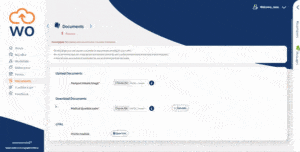While helping organisations to improve their handling of new hires, the webonboarding team receives some great insights into the everyday problems faced by hiring teams. In this series, we take a look at some of these real-world stories and how they help to highlight better ways to tackle employee onboarding:
The Situation: A Costly Mistake
This was an onboarding issue that occurred to a large national company, with regional offices dotted around the country. Their hiring process was to recruit locally through the various offices and using HR business partners. Once successful applicants had been selected, all of the information would be sent down to a centralised administration team who would then handle the rest of the process. Generic templates were used to create contracts, with individual clauses added or adapted to reflect the different roles involved. It’s a system which had worked fine until it didn’t.
Contract complications
During the probationary period for one of the individuals brought into the company, a decision was made to terminate their employment. The new hire was failing to perform and the hiring manager saw little hope of the situation improving. It’s exactly the kind of situation that probation periods are designed to cover – and that’s where the problems started. When the HR team started pulling together the original onboarding paperwork, they realised that a crucial section of the contract that covered probation terms had been missed out. Effectively, there was no probationary period. It meant that four weeks notice was required rather than one.
Knock-on effects of error
For a large organisation, this was a relatively minor bump in the road but it would have some costly future consequences. It created uncertainty about how many other contracts could contain similar issues. The only way to find this out was by manually checking through a large amount of paperwork that had recently been processed by the team. As a sizable organisation, this took up a large amount of HR time and resources. The other impact was even more costly. The uncertainty caused by this issue led to a change of process with the regional HR business partner being asked to check agreements before they are sent out. This resulted in a significant hike in the cost per hour for onboarding, as well as the organisational damage caused by a perceived lack of trust in the central HR admin team.
Takeaway: Automate your process
Contract handling is the most important element of onboarding to get right – it’s also the most challenging. It’s an area where small admin errors and mix-up can have big consequences. What heightens the risks for so many organisations is that is still being handled manually, with HR adapting templates – adapting, adding and deleting sections for different roles. By using a cloud-based management system, this process can be automated with custom templates specific to any number of jobs. While paperwork still needs human checks, it significantly reduces the risks that are posed by admin errors.




